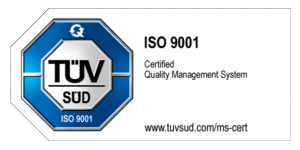perfect potting with the innovative dispensing technology from dosmatix.
In automated manufacturing—whether in single-item, mass, or series production—potting processes are of crucial importance. These processes play a central role in tasks such as bonding, filling, sealing, heat conduction, insulation, and sealing, as they make a significant contribution to the service life, functionality, and quality of numerous parts and components. Without these processes, the success of many manufacturing processes would not be guaranteed.
In addition, the importance of digitalization in mechanical engineering is constantly growing. This is because there is an increasing demand for smart and easily integrable solutions that enable rapid adaptation to changing requirements. These changes continuously require new technologies and innovative approaches that significantly increase efficiency and flexibility in production.
The details of the casting process are also of great importance. In addition to the properties of the casting resins, component contours, temperatures, the viscosity of the materials, curing processes, and the preparation of bubble-free and homogeneous dispensing materials also play a central role. Only by precisely coordinating these factors can the best possible results be achieved.
dispensing processes
Given the diverse challenges in dispensing technology, different tasks require the use of specialized dispensing techniques. Therefore, dosmatix offers customized solutions for a variety of dispensing processes. Depending on the specific needs of each application, tailored materials are employed to ensure a precise match with the requirements, guaranteeing the best possible outcomes.
potting materials
Modern dispensing technology makes it possible to process a wide range of materials with different viscosities that are suitable for various applications. For example, specific materials such as epoxy resins, polyurethanes, silicones, and thermal pastes are used in electronic potting compounds, each of which offers its own advantages and can be optimally used depending on the application.
industries
By using our advanced dispensing methods, dosmatix not only sets groundbreaking quality standards, but also offers unprecedented economic advantages. Increased performance and optimal material utilization are combined with simplified handling and future-proof integration. This ultimately leads to more cost-efficient material dispensing overall. Thanks to these groundbreaking approaches, we ultimately achieve optimal dispensing results that benefit numerous industries.
questions and answers
What dispensing technologies are there?
A: Different dispensing techniques are used depending on the application and type of material. There are therefore a variety of different methods, including volumetric and gravimetric dispensing, dispensing pumps, dispensing systems with screw conveyors, automatic dispensers, and spray dispensing. The choice of the appropriate technique always depends on the type of material and the specific requirements.
Why are fillers used in dispensing technology?
A: Fillers are used in dispensing technology to specifically influence the properties of liquids or pasty media. Among other things, they change the viscosity, strength, durability, and, if necessary, the electrical properties and thermal conductivity. In addition, they help to reduce shrinkage during curing and thus influence other material properties.
What is dispensing technology?
A: Dispensing technology refers to the field of technology that deals with the precise dispensing of materials. The main objective of dispensing technology is to process materials in precisely defined quantities and doses efficiently and without errors.
What is joining process?
A: Joining processes refer to the various techniques and methods used to join two or more workpieces. These processes represent a key technology in manufacturing and therefore play an essential role in numerous industries, such as materials processing, the automotive industry, aerospace, electronics, and many other areas.
What joining processes are there?
A: There are various joining processes used in industry to connect materials, such as welding (arc, resistance, and friction welding), soldering, gluing, riveting, screwing, and clinching. dosmatix offers solutions for a wide range of casting processes, using the most suitable materials for each application. For example, materials are used for sealing, bonding, casting, sealing, insulating, or heat management.


